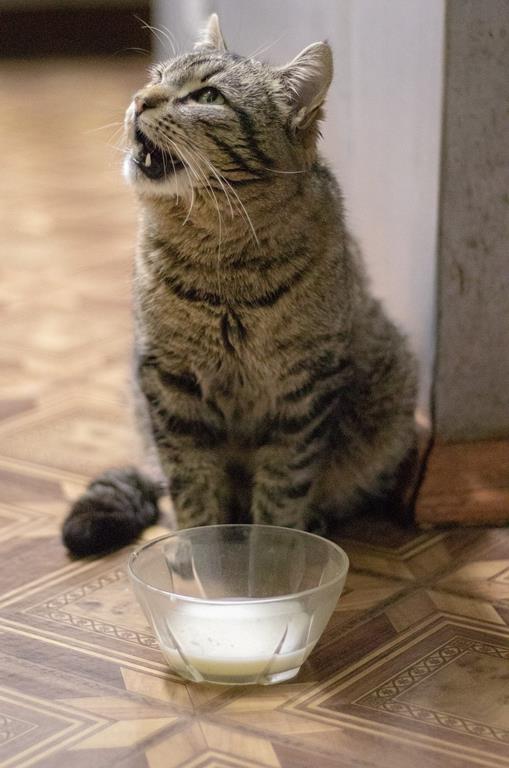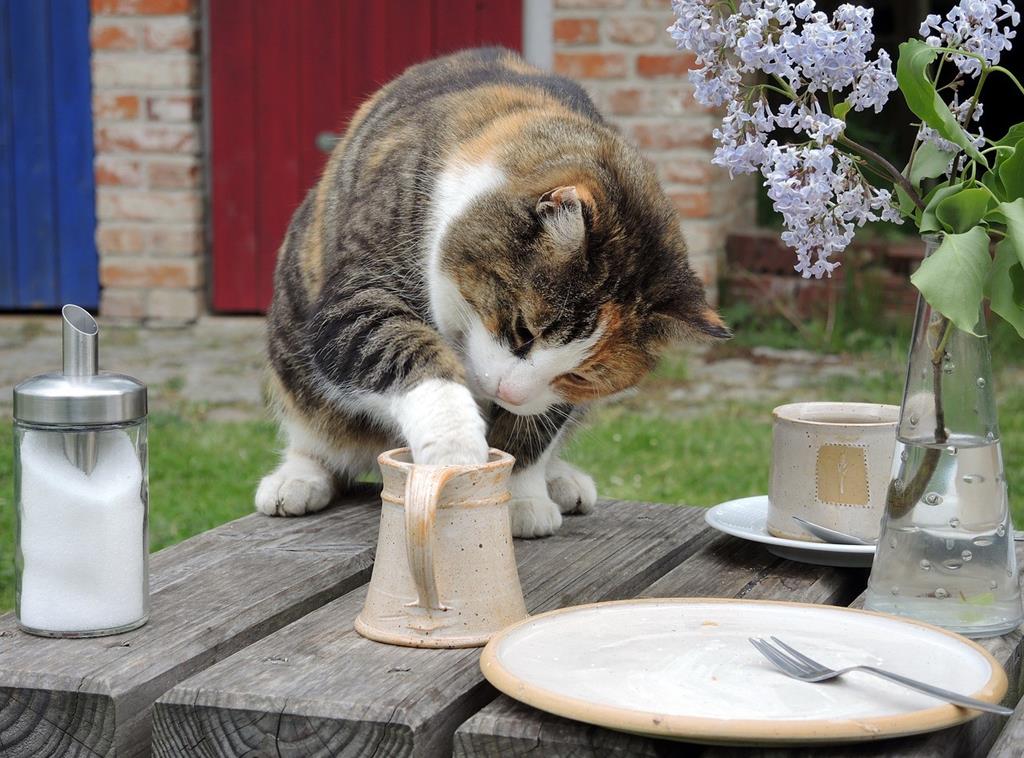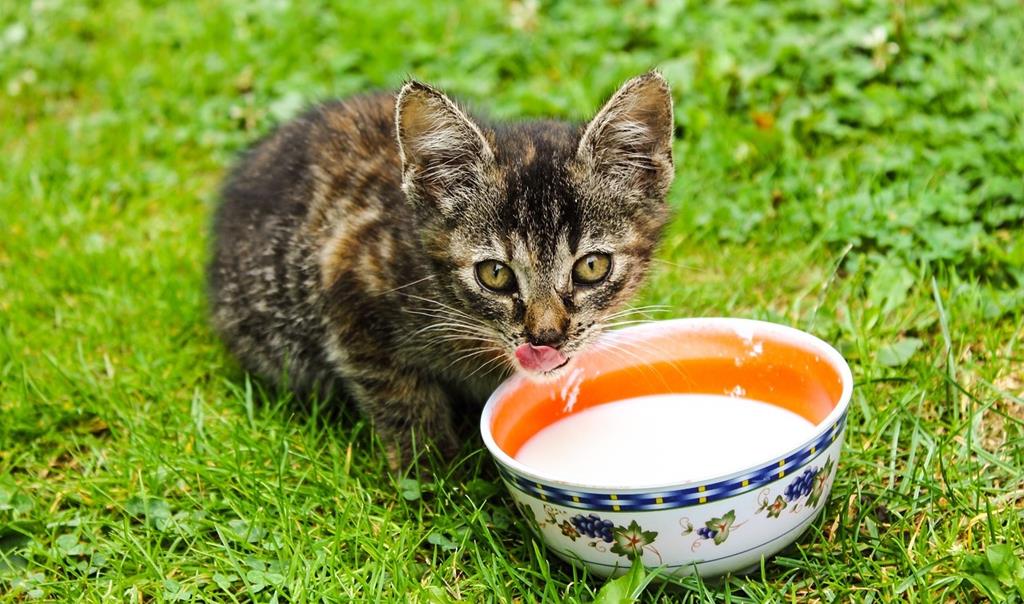The myth of cats and milk is a widely held but mistaken belief that cats have a natural affinity for and benefit from drinking milk. This myth has persisted for centuries, likely due to depictions in popular culture and folklore.
Historical Origins of the Myth:
- Folklore and Tales: Cats have often been portrayed as enjoying milk in various folktales and stories. These depictions have contributed to the perception that milk is a natural and healthy treat for cats.
- Barn Cats: In agricultural settings, cats were commonly found in barns and farms where they helped control rodent populations. Farmers often offered milk to barn cats as a way to entice them to stay and continue their valuable pest control duties.
- Cultural Depictions: Popular culture, including cartoons, movies, and advertisements, has frequently featured scenes of cats happily lapping up milk from a saucer. These portrayals have reinforced the belief that milk is a cat’s favorite treat.
The Reality of Lactose Intolerance:
Contrary to the myth, the majority of adult cats are lactose intolerant, meaning they lack sufficient amounts of the enzyme lactase required to digest lactose, the sugar found in milk. Here are some key points to consider:
- Kittens vs. Adult Cats: Kittens typically have higher levels of lactase, allowing them to digest their mother’s milk. However, as cats age and are weaned, their lactase production often decreases.
- Digestive Issues: When lactose-intolerant cats consume milk or dairy products, they may experience digestive problems such as diarrhea, gas, and stomach cramps. These issues can be uncomfortable and distressing for the cat.
- Individual Variability: Some cats are more lactose intolerant than others. While a few may tolerate small amounts of milk without immediate symptoms, it’s not advisable to make milk a regular part of their diet.

Proper Cat Nutrition:
To provide proper care for your cat, it’s essential to prioritize a balanced diet tailored to their specific nutritional needs. Here are some important considerations:
- High-Quality Cat Food: Choose a high-quality commercial cat food that provides all the essential nutrients your cat requires, primarily sourced from animal-based proteins.
- Freshwater: Ensure that your cat has access to fresh, clean water at all times. Adequate hydration is crucial for overall health and well-being.
- Cat Treats: If you want to offer your cat occasional treats, opt for specially formulated cat treats available at pet stores. These treats are designed to be safe and enjoyable for felines.
Why do cats go crazy for milk?
The idea that cats love milk is a common stereotype perpetuated by popular culture, but it’s not entirely accurate. While it’s true that some cats do enjoy the taste of milk, many cats are actually lactose intolerant, meaning they lack the enzyme lactase needed to digest lactose, the sugar found in milk.
When kittens are nursing from their mother, they naturally produce lactase to digest her milk. However, as cats grow and transition to solid food, many of them lose the ability to digest lactose effectively. Consuming milk or other dairy products can lead to digestive upset in these lactose-intolerant cats, causing symptoms like diarrhea, gas, and stomach discomfort.
The perception that cats love milk likely stems from their interest in liquids in general. Cats have a low thirst drive and often prefer to get their moisture from their food. Therefore, when offered something liquid and tasty like milk, some cats may be drawn to it. However, this doesn’t mean milk is a healthy or safe treat for them.
If you want to give your cat a special treat, it’s better to offer them cat-friendly alternatives like fresh water, specially formulated cat milk, or cat treats designed for their digestive system. Always consult with your veterinarian to ensure you’re providing the best diet and treats for your individual cat’s needs.
How much milk can you give a cat?
As mentioned earlier, many cats are lactose intolerant, which means they have difficulty digesting lactose, the sugar found in milk. If you’re considering giving milk to your cat, it’s essential to be cautious and aware of your cat’s tolerance for dairy products. Here are some guidelines:
- Small Amounts: If you want to give your cat a small amount of milk as an occasional treat, start with a tiny quantity, like a tablespoon or less. Some cats may tolerate small amounts of milk without experiencing digestive issues.
- Lactose-Free Milk: Consider using lactose-free milk, which is specially formulated for cats. These products have reduced or no lactose content and are less likely to cause digestive upset.
- Monitor for Reactions: After giving your cat milk, closely monitor them for any signs of digestive upset. These may include diarrhea, gas, vomiting, or stomach discomfort. If you notice any of these symptoms, discontinue giving milk immediately.
- Consult a Veterinarian: It’s a good idea to consult with your veterinarian before offering milk or any dairy product to your cat, especially if you’re unsure about your cat’s lactose tolerance or if your cat has a history of digestive issues.
In general, it’s best to offer water as the primary source of hydration for your cat. Cats are obligate carnivores, and their nutritional needs are met more effectively through a balanced cat food diet. If you want to treat your cat, look for cat-specific treats or snacks designed to be safe and appropriate for their digestive system.
Remember that not all cats are lactose intolerant, but it’s essential to be cautious, especially if you’re unsure about your cat’s tolerance for dairy. Overindulging in milk can lead to digestive problems, so moderation is key.

Is warm milk good for cats?
Offering warm milk to cats is not necessarily beneficial or harmful; it largely depends on the individual cat and their preferences. However, there are a few important points to consider:
- Lactose Intolerance: Most adult cats are lactose intolerant, which means they lack the enzyme lactase needed to digest lactose, the sugar in milk. Warm milk won’t change this fact. If your cat is lactose intolerant, consuming milk, whether warm or cold, can still lead to digestive upset, including diarrhea, gas, and stomach discomfort.
- Preference: Some cats may enjoy the taste of warm milk, while others may not be interested. Cats are individuals with varying preferences, so whether your cat likes warm milk or not depends on their personal taste.
- Nutritional Value: Milk, including warm milk, does not provide essential nutrients that cats need. Cats are obligate carnivores, and their primary source of nutrition should come from a balanced cat food diet. Treats like warm milk should be offered sparingly and should not replace a nutritious cat food.
If you want to offer your cat warm milk as an occasional treat, you can do so in small amounts and monitor your cat for any adverse reactions. However, it’s crucial to be aware of your cat’s lactose tolerance and not make it a regular part of their diet.
Always prioritize fresh water as the primary source of hydration for your cat. If you have any concerns about your cat’s diet or are considering introducing new foods or treats, consult with your veterinarian for guidance tailored to your cat’s specific needs and dietary requirements.
Conclusion:
In conclusion, the myth of cats and milk persists despite scientific evidence that many cats are lactose intolerant. It’s important to dispel this myth to ensure the health and well-being of our feline companions. Rather than offering milk as a treat, prioritize a balanced diet and fresh water to meet your cat’s nutritional needs. Consulting with your veterinarian can provide valuable guidance on proper cat nutrition and care.



